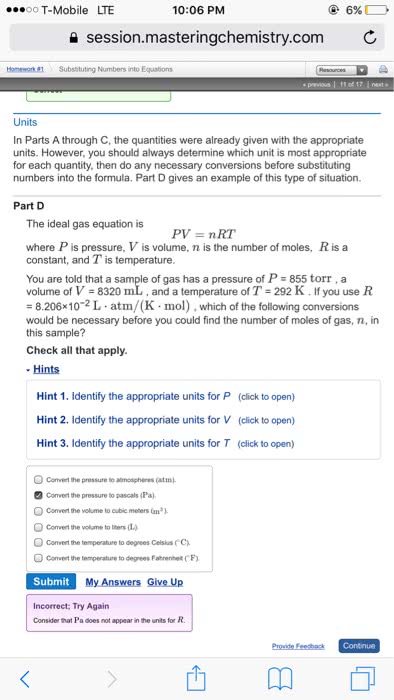CHM1011 Lecture Notes - Lecture 6: Gas Constant, Gas Laws, Covalent Bond
Document Summary
Any object that strikes a surface exerts a force against it. Pressure (p) is defined as force (f) per unit area (a), so the pascal unit is expressed by combining the si units for these two variables. The si unit of force is the newton (n), and the unit of area is square metres (m2). Thus 1 pa = 1 kg m-1 s-2. = 1 j m-3 = 1 n m-2 (with 1 n = 1 kg m s-2 and 1 j = 1 kg m2 s-2). However: note that the most common units used in this section are pascals (pa), kilopascals (kpa) or atmospheres (atm). Conversions into other pressure units are as follows: 1 atm = 101,325 pa = 760 torr = 14. 696 psi = 1. 01325 bar = 760 mm hg. Boyle"s law: pv = k: pressure was originally measured using a manometer, liquid mercury moves as the external pressure changes, a mercury barometer.


